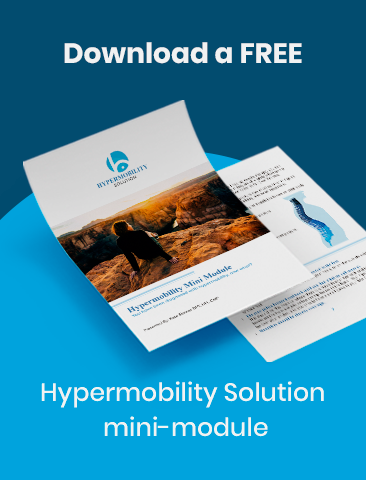For those grappling with Hypermobility, the array of accompanying health concerns might seem overwhelming. But remember, you’re not alone. Here, we shed light on the top eight Hypermobility comorbidities, offering understanding and guidance on each.
Autonomic Nervous System Issues: POTS
Your autonomic nervous system oversees many involuntary actions, like heart rhythm. When this system faces disruptions, which is common in Hypermobility, it can lead to symptoms such as palpitations or feeling light-headed. One notable concern here is Postural Orthostatic Tachycardia Syndrome (POTS).
Managing POTS:
- Increase dietary salt.
- Opt for smaller meals.
- Consider vitamin supplements.
- Stay hydrated and limit alcohol.
- Avoid abrupt movements.
- Use compression where needed.
Chronic fatigue
Chronic fatigue isn’t mere tiredness. Linked to Hypermobility, it can culminate in sleep disruptions, chronic pain, and other factors.
Managing Chronic Fatigue:
- Prioritize demanding tasks.
- Engage in moderate exercise.
- Monitor your diet.
- Use tools like planners.
- Seek support when needed.
Autoimmunity
Hypermobility has ties to autoimmune disorders, where the body’s immune system mistakenly attacks its own cells.
Managing Autoimmune Responses:
- Maintain a balanced diet.
- Engage in regular, moderate exercise.
- Ensure adequate rest.
- Minimize stressors.
Sleep disorders
Many with Hypermobility experience sleep disorders, possibly due to issues in the autonomic nervous system combined with chronic pain.
Managing Sleep Issues:
- Ensure a comfortable sleeping environment.
- Evaluate your sleeping posture.
- Seek treatment for sleep apnea if necessary.
- Limit caffeine.
Skin Concerns
Telltale skin signs, such as stretchiness or easy bruising, can indicate HSD due to collagen irregularities.
Managing Skin Issues:
- Develop a skincare routine.
- Be cautious of your environment.
- Be proactive before surgeries.
- Limit potential skin injuries.
Bladder disorders
Changes in bladder and pelvic anatomy and neurological issues can lead to bladder disorders in those with Hypermobility.
Managing Bladder Concerns:
- Monitor fluid intake.
- Limit bladder irritants.
- Engage in bladder training.
- Strengthen the pelvic region.
Dental Concerns
There’s an observed link between Hypermobility and oral health challenges.
Managing Dental Issues:
- Limit sugary consumables.
- Maintain oral hygiene.
- Schedule regular dentist visits.
Mast Cell Activation Disorder (MCAD)
MCAD and Hypermobility may be interlinked due to connective tissue disruptions affecting mast cell behavior.
Managing MCAD:
- Recognize and avoid triggers.
- Engage in regular exercise.
- Seek stress-reducing techniques.
- Consider desensitization therapy.
In conclusion, there seems to be a significant relation between Hypermobility comorbidities and the autonomic nervous system. In the end, this system regulates most of our involuntary actions – our heartbeat, sleep, breathing, and much more.
Some issues pop up as secondary from the Hypermobility condition itself, the acting up of the collagen, or even secondary problems because of the joints dysfunction.
Maybe it would help to see these comorbidities as the results of a few common issues rather than an unrelated and endless list of illnesses. The more we talk about it, the more we have a chance to understand and move forward on these types of issues.
If you can identify any of these comorbidities in yourself, don’t hesitate to reach out to your doctor.
To a pain-controlled life,
Kate Skinner, PT.
Looking for an online support team? Join the Hypermobility Solution Facebook Group here!

About Kate

Kate Skinner is a Doctor in Physical Therapy, co-founder of Great Divide Physical Therapy, and creator of Hypermobility Solution.
Recent Posts

